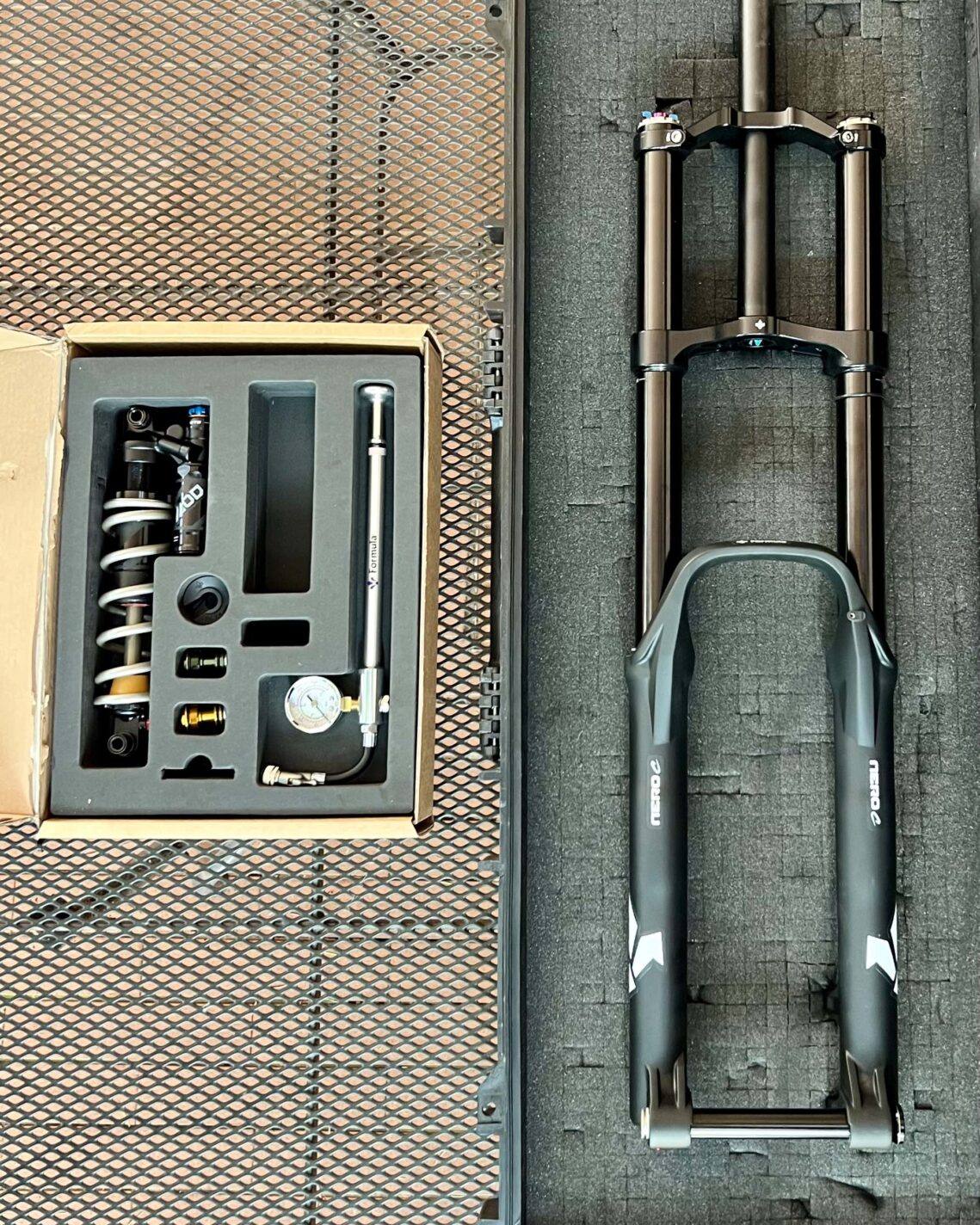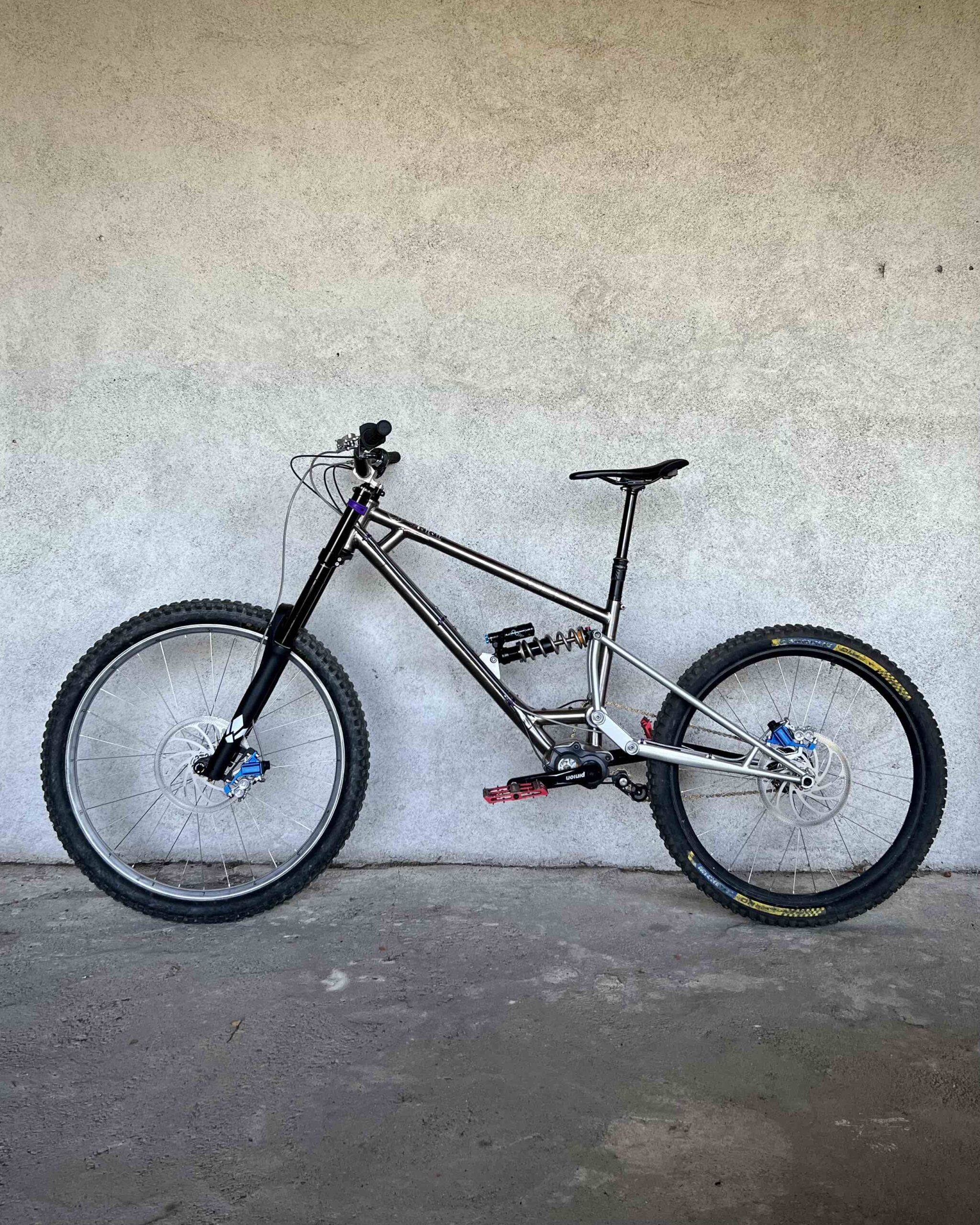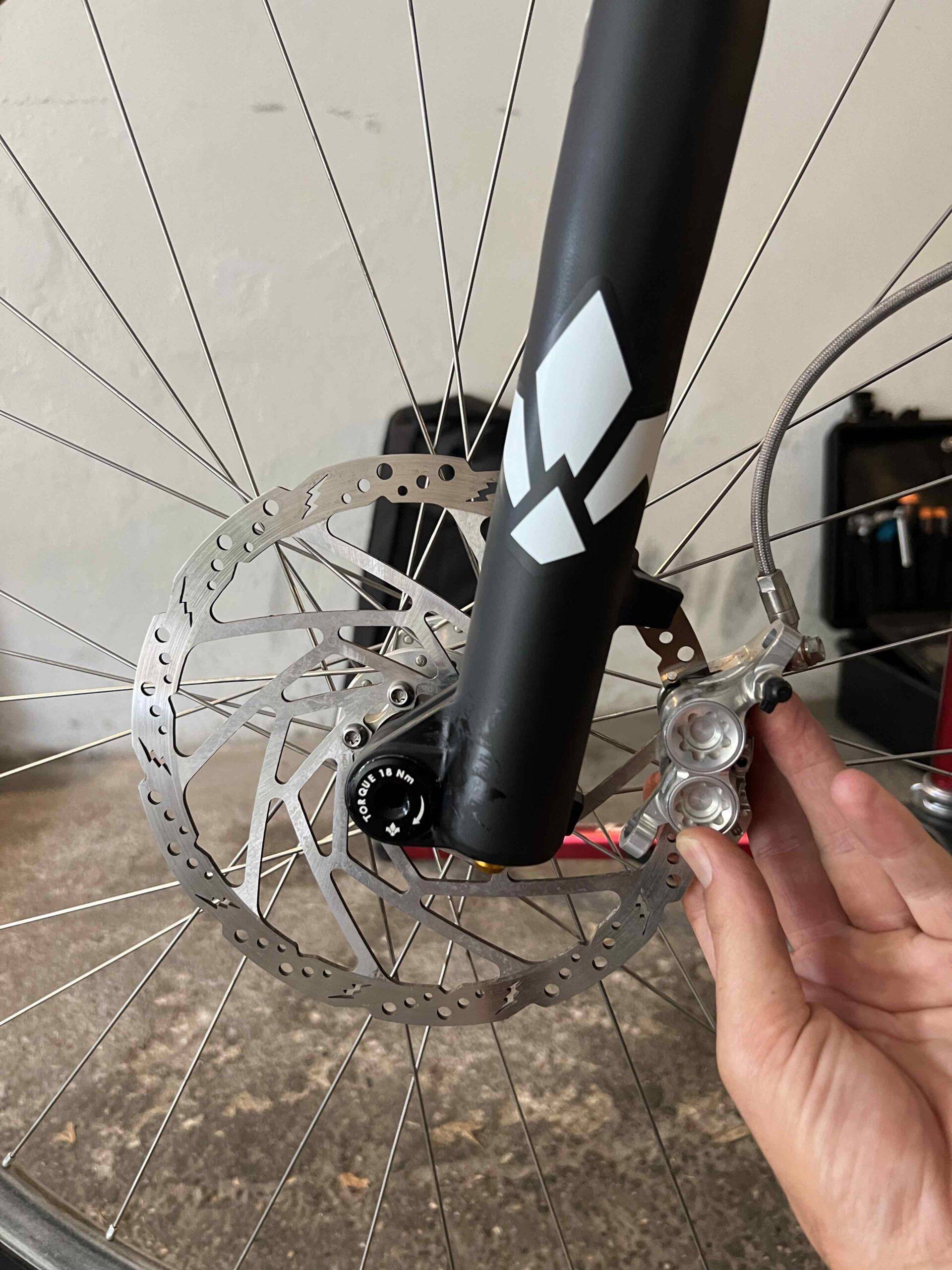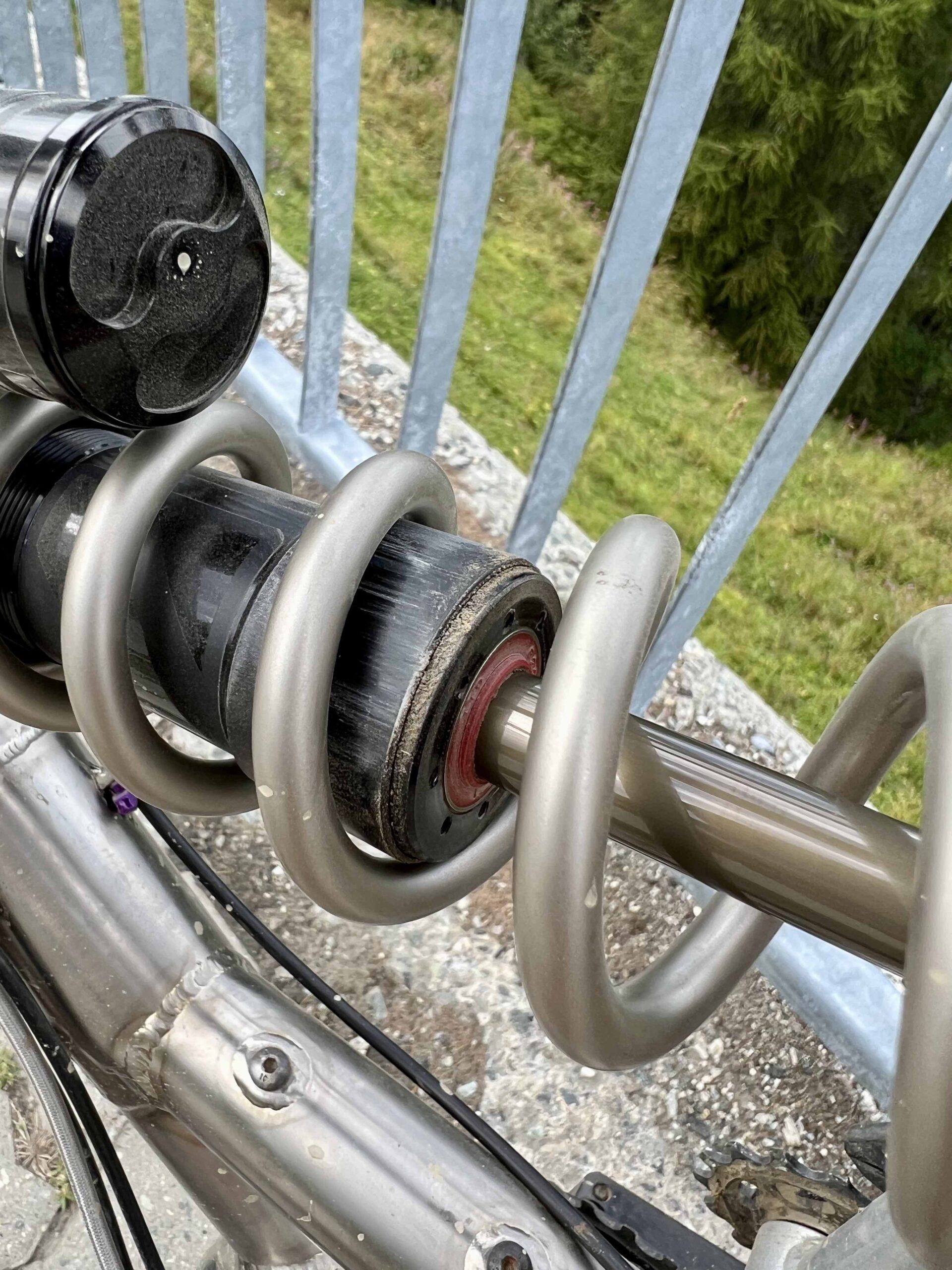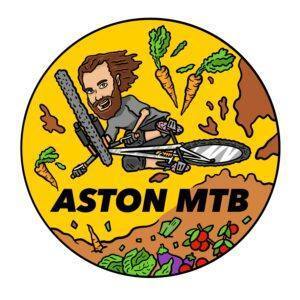Introduction
I recently picked up these Formula Suspension units after many requests from loyal AstonMTB followers and I’ve put 4-5 days riding in to them so far.
I went for the heavier and cheaper Nero C which is the coil-sprung version and a matching Mod DH coil shock. The C has an RRP around €1680 compared to the triple air chamber R at €2165 (please check in your own country for precise figures). The weight difference is 2610g V’s 2840g, I would say 230g difference is negligible for a DH-oriented bike.
Negatives
Let’s get the negatives out of the way! The Nero comes with a PM160mm brake mount, which, I think is very silly. It’s a DH fork so should have the now-standard PM200/203mm mount (I prefer 200mm in case you have existing 203mm discs you can space the caliper up with some washers). This meant my first few days of testing were cancelled as I collected the fork while on the road in the camper and didn’t have any +40 or +60mm mounts to match the 200/220mm rotors I had with me.
This brake mount non-standard is not mentioned in the detailed tech sheet on the Formula page, or otherwise, it might have flagged up on my radar and not wasted those first few days. The reason for this is that the lowers are shared between the Nero and Selva enduro forks, I’d still argue that the Selva should have a 200mm mount and that 160mm is ideal for a fork from 1998. I did suggest to Formula they update their website with this info on 25th July, but as of the 18th August, it has not been updated. Let’s hope the web guy is away for the summer holidays.
When I finally did get home and got the right brake mount, I found there are no start settings at all on the Formula website or in the manual. I’d already had a little moan on Instagram and had been contacted by an old friend now working at Formula, I enquired about settings and was given the direct email for someone at Formula, good in this case for me, but not good for general consumers. This flags up the first point that I always try to make: buy your suspension from a reputable tuner (I highly recommend J-Tech in UK, NSR in Aus, and Rulezman in Europe), it will cost the same, they will strip and check everything for you before Day 1, they will also make sure you have the right settings to start in the right ballpark and then you can adjust from there.
The ‘FIRM’ axle locking system uses a normal axle that screws through the hub and then has a screw-in plug on the opposite which locks it in place. The torque readings are 18nm for the main axle and 12nm for the plug, which is fine unless the first time you want to remove the axle you forget the plug is a reverse thread (it is laser etched with the direction so it is my fault) and you crank it down hard closing it more by mistake – then when you try to open it the entire axle turns – make sure you have two 6mm hex keys with you if you need to remove the wheel when travelling or it might get stuck. I only made this mistake once!
The official Formula coil spring rubs quite a lot on the shock body which can happen if you have a spring with a too-small internal diameter, but it does have a plastic slider/sheath to protect the metal surface and reduce added friction when the spring bends under load.
The final negative is that on high-speed braking/vibration bumps which are popular in summer bike parks, there’s a noticeable point where the fork starts to bind and can be harsh.
Phew, let’s get to some positives!
The friction on the fork is really, really good out of the box. I assume this is mainly because of the coil spring which instantly removes 2-4 seals that add friction on every single up and down motion. Secondly, I hope that this smaller volume brand assembling products in Italy (I believe most parts like the cast lowers are made in Taiwan/Asia) is paying more attention to detail and maybe even sizing the bushing on each individual fork before it leaves the factory? I’ve ridden a number of Formula forks in the past and they always have really low friction.
After a few days of riding the Nero, I got to some settings I was comfortable with the soft spring, HSC -10/25, LSC -5/15 and rebound -10/20. I’m not saying these are perfect numbers but I’m in a pretty happy place, I only just got around to emailing Formula as I was trying to follow the true consumer path.
At the other end of the scale, bottom-out resistance is on the Nero is good and haven’t felt the end of the travel yet. Mid-stroke support is great and nothing much else to report: it does what a fork is supposed to do and didn’t develop any issues in the first days riding unlike my DVO Onyx and Ohlins M38 I rode purchased and tested last year.
The Mod shock seemed to create quite a lot of interest judging by the number of test requests I’ve had. The main POI is the CTS which means you can essentially switch out the entire compression shim stack and drop in another. Off to the bike park, start riding with the standard orange CTS, realise it’s too soft for me and my bike and then drop in the firmer CTS? No way! It’s an easy procedure, but not something I would want to do next to my van as it involves opening the piggyback, I waited to get to my clean garage with a vice to avoid contamination or problems. I have used CTS in Formula forks before, and that is a process that can be done trail-side.
For the next trip I’d already easily popped in the firmer green CTS and it made a noticeable difference. Now I was having a great ride but still ended up with -1 clicks from closed on compression. Higher-speed compression events and bottom-out resistance were very good, but it was slightly lacking in lower-speed support. How do you know this? The chassis was less stable than I would like on smoother rolling sections of the trail and was bobbing up and down in the travel too much. For me, I’d like to see another firmer CTS option above the green but with increased low to mid-speed compression and without more high-speed force. I’m basing this off the numberless graphs on the Formula website which indicates this is a very progressive shock tune, for their Selva forks there are CTS options aimed towards racing with higher forces at lower speeds to give a more stable platform which allows a more active/aggressive ride. I’d like to see this for the Mod too, but as always these are just guessing games as with all MTB brands we only see nicely coloured graphs but with no actual numbers on the axis.
I’m not a heavy rider at 73kg fully kitted and wasn’t trying to ride at particularly high speeds. For lighter riders, and or riders with more progressive bikes there will probably be some decent settings for you after a few runs/days of trial and error.
Conclusion
Overall the Formula suspension has been pretty good. I would like to see a basic settings chart provided by Formula to give ballpark figures of rider weight with suggested CTS, compression and rebound settings – Formula is a brand that offers loads of different adjustments on their products which is great, but this can easily lead to people getting things wrong or wasting a lot of time getting it right.
If you are in the UK I would suggest Elro Distribution who should give you some solid start settings and aftersales service. Elro is run by Paul Shepard who worked at Mojo Suspension and was integral in the development and tuning of the Geometron bike revolution and also the EXT suspension.
I’ll put some more time into these products over the next few months and update in the future. In the meantime, grab some tickets to win €3500 of Dorado/Intend/Cane Creek suspension from Rulezman which is guaranteed to give you the products and settings you need from Day 1. These comps support my independent reviews where I buy all of the products myself and receive 100% of my funding from the public through the comps on this site.
Final Word – Content has been much slower than I would have liked recently: I’m working on a new website which will collate all my review work into one place and make it much easier for followers to find and read. This will be the last terribly formatted WP-blog!
Thanks, Paul.
